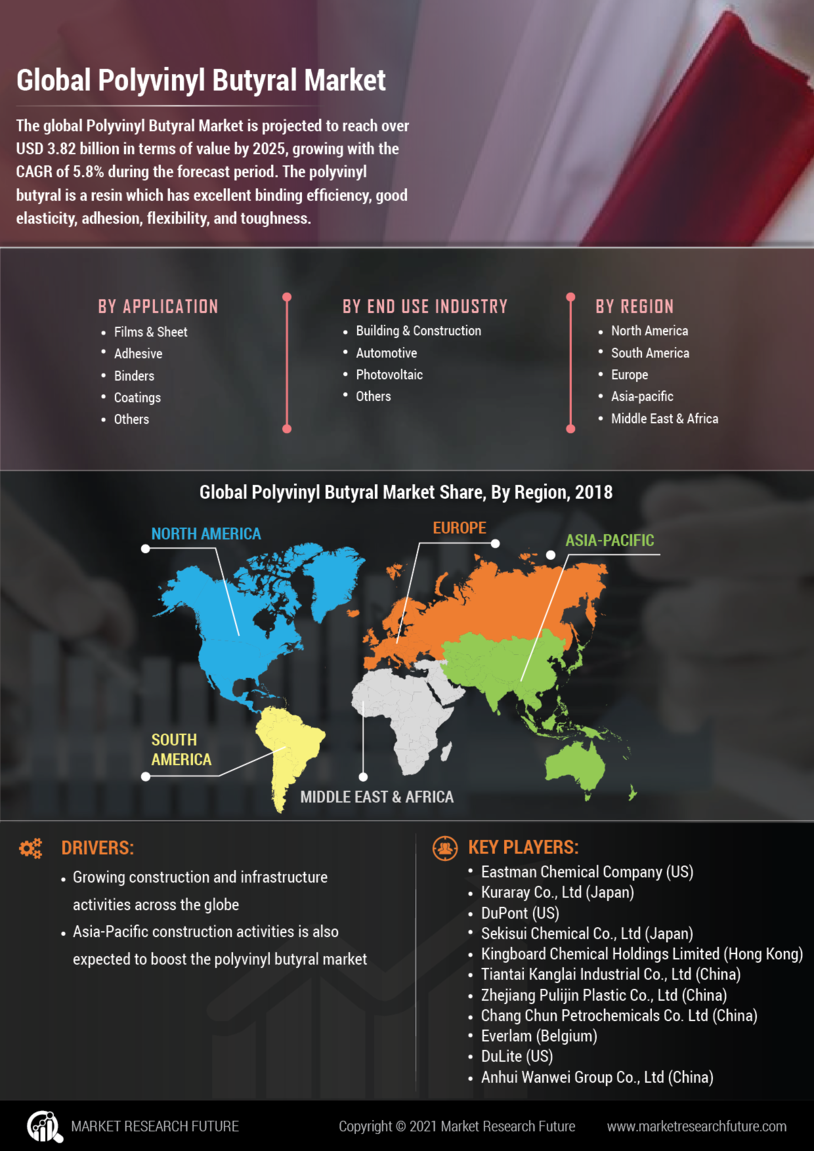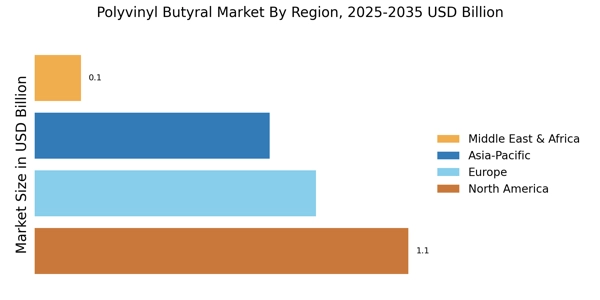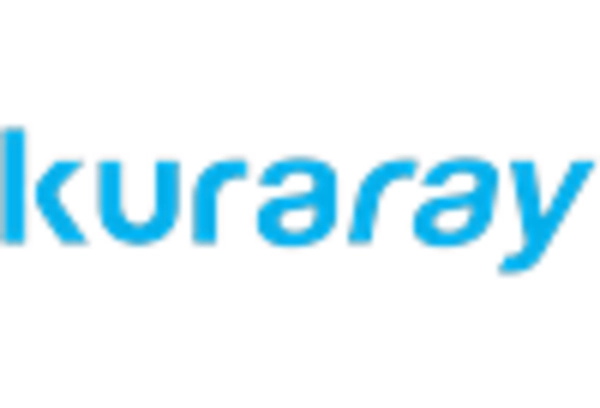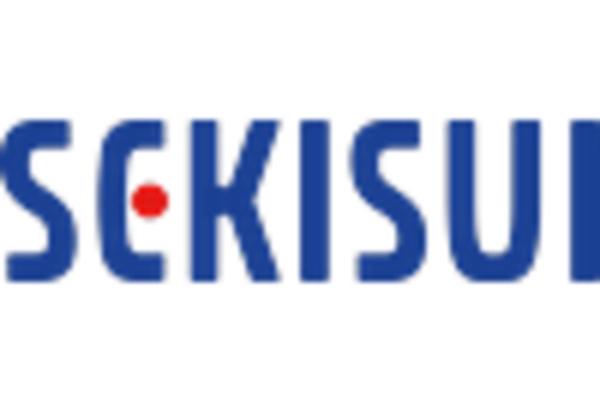Rising Demand in Automotive Sector
The Polyvinyl Butyral Market is experiencing a notable surge in demand, particularly from the automotive sector. This increase is primarily driven by the growing need for safety and performance in vehicles. Polyvinyl butyral is extensively utilized in the production of laminated safety glass, which enhances the structural integrity of windshields and windows. As per recent data, the automotive segment accounts for a substantial share of the overall market, with projections indicating a compound annual growth rate of approximately 5% over the next few years. This trend is likely to be fueled by advancements in automotive technology and the increasing emphasis on passenger safety, thereby solidifying the position of Polyvinyl Butyral Market in the automotive industry.
Growing Focus on Safety Regulations
The Polyvinyl Butyral Market is significantly influenced by the growing focus on safety regulations across various sectors. Governments and regulatory bodies are increasingly mandating the use of safety glass in vehicles and buildings, which directly boosts the demand for Polyvinyl Butyral Market. This material is essential for producing laminated glass that meets stringent safety standards. As safety regulations become more rigorous, manufacturers are compelled to adopt materials that comply with these requirements, thereby enhancing the market potential for Polyvinyl Butyral Market. Recent data indicates that compliance with safety standards is likely to drive a market growth rate of approximately 4% annually, reflecting the critical role of Polyvinyl Butyral Market in ensuring safety in both automotive and architectural applications.
Expansion in Architectural Applications
The Polyvinyl Butyral Market is witnessing significant growth due to its expanding applications in architectural design and construction. Polyvinyl butyral is favored for its excellent adhesive properties and ability to provide sound insulation and UV protection. The increasing trend towards energy-efficient buildings and the use of laminated glass in facades and skylights are contributing to this expansion. Recent statistics suggest that the architectural segment is projected to grow at a rate of around 6% annually, driven by urbanization and the demand for aesthetically pleasing yet functional structures. This growth indicates a robust future for Polyvinyl Butyral Market in the construction sector, as architects and builders seek innovative materials that enhance both safety and design.
Increased Investment in Renewable Energy
The Polyvinyl Butyral Market is also benefiting from increased investment in renewable energy projects. As the world shifts towards sustainable energy solutions, the demand for materials that support solar energy applications is rising. Polyvinyl butyral is utilized in the production of solar panels, where it serves as an encapsulant that protects photovoltaic cells from environmental damage. The growing emphasis on clean energy and sustainability is likely to propel the market forward, with projections suggesting a growth rate of around 5% in the renewable energy sector. This trend indicates a promising future for Polyvinyl Butyral Market, as it aligns with global efforts to enhance energy efficiency and reduce carbon footprints.
Technological Advancements in Production
Technological advancements in the production processes of Polyvinyl Butyral Market are playing a crucial role in shaping the Polyvinyl Butyral Market. Innovations in manufacturing techniques are leading to improved product quality and reduced production costs. For instance, the development of more efficient polymerization methods has resulted in higher yields and better performance characteristics of Polyvinyl Butyral Market. This is particularly relevant as manufacturers strive to meet the increasing demand from various sectors, including automotive and construction. Furthermore, the integration of automation and digital technologies in production lines is expected to enhance operational efficiency, thereby potentially increasing the market share of Polyvinyl Butyral Market in the coming years.


















Leave a Comment